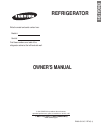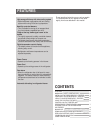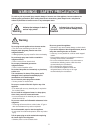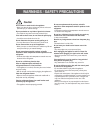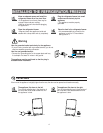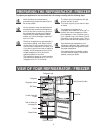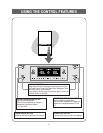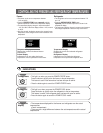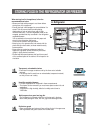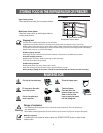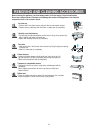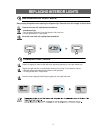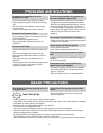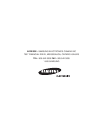
USAGE PRECAUTIONS
PROBLEMS AND SOLUTIONS
12
• Please note that this noise is caused by the refrigerant
circuit and is not a problem.
You can hear a liquid bubbling in the appliance
• Do not wrap food with paper.
• Store foods covered and clean the cold inlet.
There is a bad smell inside the appliance
• Space the food out as much as possible to improve
ventilation.
• Is the door fully closed?
There is a layer of frost on the surface of stored
food.
• Food with a high water content is stored uncovered
with a high humidity level or the door has been left
open for a long time.
• Store the food with a cover or in sealed containers.
Condensation forms on the inside wall of the
appliance and around vegetables
• Check that the power plug is correctly connected.
• Is the temperature control on the front panel correctly
set?
• Does sun shine on the appliance or are there heat
sources nearby?
• Is the back of the appliance too near to the wall?
The appliance is not operating at all or the
temperature is too high
• Is the temperature control on the front panel set to the
coldest temperature?
• Is the surrounding temperature too low?
• Did you put food with a high water content in the
refrigerator?
The food in the refrigerator is frozen
• Check that the appliance is installed on a stable, level
floor.
• Is the back of the appliance too near to the wall?
• Have any foreign objects fallen behind or under the
appliance?
• Is the noise coming from the compressor in the
appliance?
• A ticking sound may be heard inside the appliance; this
is normal. This sound occurs when the various
accessories contract or expand.
There are unusual noises
• Heat-proof pipes are installed in the front corners of
the appliance to prevent condensation from forming.
When the surrounding temperature rises, this may not
always be effective. However, this is not abnormal.
• In very humid weather, condensation may form on the
outer surface of the appliance when moisture in the air
comes into contact with the cool surface of the
appliance.
The front corners and sides of the appliance are
warm and condensation starts to form
Store food with a high water content at the front of
a refrigerator shelf.
• If you store cold food, you save on electricity and
improve refrigeration.
Store hot food in the appliance only after it has
cooled.
Power Saving Tips
• Install the appliance in a cool, dry room with adequate ventilation.
Ensure that it is not exposed to direct sunlight and never put it near a direct source of heat (radiator, for example).
• Never block any vents or grilles on the appliance.
• Allow warm food to cool down before placing it in the appliance.
• Put frozen food in the refrigerator to thaw.
You can then use the low temperatures of the frozen products to cool food in the refrigerator.
• Defrost the freezer when ice builds up. A thick coat of ice will impair the transfer of cold to the frozen products,
thereby increasing power consumption.
• Do not keep the door of the appliance open for too long when putting food in or taking food out.
The shorter time the door is opened, the less ice will form in the freezer.
• When freezing food or storing it in the freezer, place the food directly on the freezer elements in the top container.
Tips



